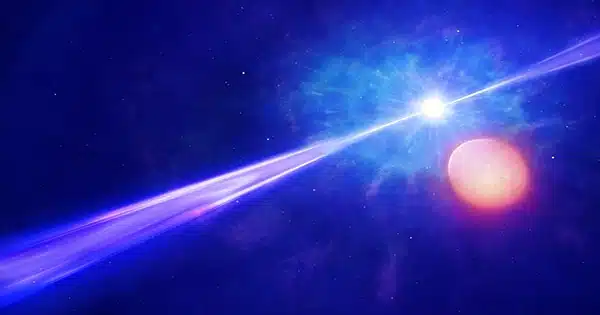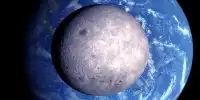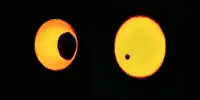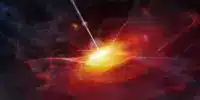Astronomers have discovered a strange burst of radio waves that took 8 billion years to reach Earth. One of the most distant and intense radio bursts ever seen.
Fast radio bursts, or FRBs, are brief bursts of radio waves with unknown origins. The first FRB was discovered in 2007, and hundreds of these brief cosmic flashes have been recorded since then from various locations throughout the universe.
According to research published Thursday in the journal Science, the FRB 20220610A burst lasted less than a millisecond yet unleashed the equivalent of our sun’s energy output over the period of 30 years in that fraction of a second.
Many FRBs emit highly brilliant radio waves that last only a few milliseconds before dissipating, making fast radio bursts difficult to monitor.
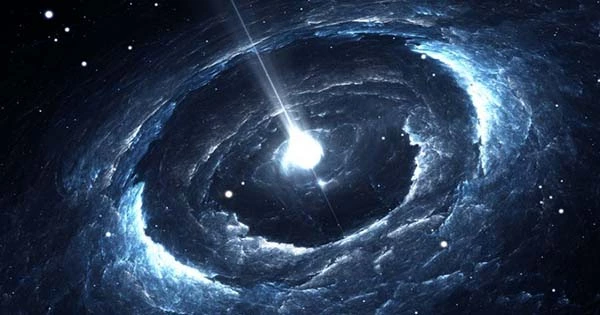
Radio telescopes, such as the ASKAP array of radio telescopes on Wajarri Yamaji Country in Western Australia, have assisted astronomers in tracing these fast cosmic bursts. Astronomers utilized ASKAP to identify the FRB in June 2022 and pinpoint its location.
“Using ASKAP’s array of (radio) dishes, we were able to determine precisely where the burst came from,” said study co-author Dr. Stuart Ryder, an astronomer at Australia’s Macquarie University, in a statement. “Then we used (the European Southern Observatory’s Very Large Telescope) in Chile to search for the source galaxy, finding it to be older and (farther) away than any other FRB source found to date and likely within a small group of merging galaxies.”
The burst was traced back to what looks to be a collection of two or three galaxies that are merging, interacting, and generating new stars. This discovery is consistent with current hypotheses that fast radio bursts are caused by magnetars, which are highly energetic objects formed by star explosions.
Scientists believe that rapid radio bursts are a one-of-a-kind technology that can be used to “weigh” the cosmos by detecting unaccounted-for stuff between galaxies.
“If we count up the amount of normal matter in the Universe — the atoms that we are all made of — we find that more than half of what should be there today is missing,” said research coauthor Ryan Shannon, an Australian professor at Swinburne University of Technology. “We think that the missing matter is hiding in the space between galaxies, but it may just be so hot and diffuse that it’s impossible to see using normal techniques.”
So far, the results of current approaches for estimating the universe’s mass do not concur, implying that the entire breadth of the cosmos is not included.
“Fast radio bursts sense this ionized material,” Shannon explained. “Even in space that is nearly perfectly empty they can ‘see’ all the electrons, and that allows us to measure how much stuff is between the galaxies.”
In 2020, the late Australian astronomer Jean-Pierre Macquart demonstrated the use of rapid radio bursts to identify missing matter.
“J-P demonstrated that the more distant a fast radio burst is, the more diffuse gas it reveals between galaxies.” Ryder referred to this as the Macquart relation. “Recent fast radio bursts appeared to have broken this relationship.”
Our measurements show that the Macquart connection extends beyond half of the known Universe.”
Nearly 50 quick radio bursts have been tracked back to their origins, with almost half of those discovered using ASKAP.
“While we still don’t know what causes these massive bursts of energy, the paper confirms that fast radio bursts are common events in the cosmos and that we will be able to use them to detect matter between galaxies, and better understand the structure of the Universe,” Shannon stated in a press release.
Astronomers expect that future radio telescopes, which are now being built in South Africa and Australia, will allow them to detect thousands more quick radio bursts at greater distances.
“The fact that FRBs are so common is also amazing,” Shannon added. “It shows how promising the field can be, because you’re not just going to do this for 30 bursts, you can do this for 30,000 bursts, make a new map of the structure of the universe, and use it to answer big questions about cosmology.”
